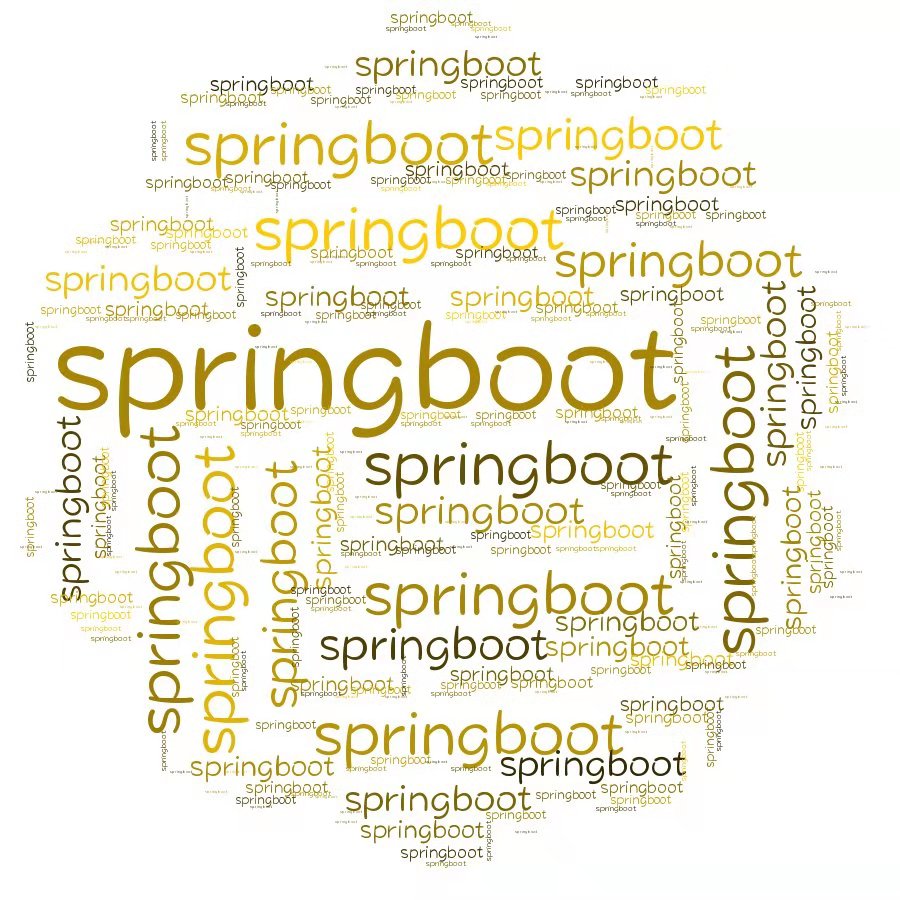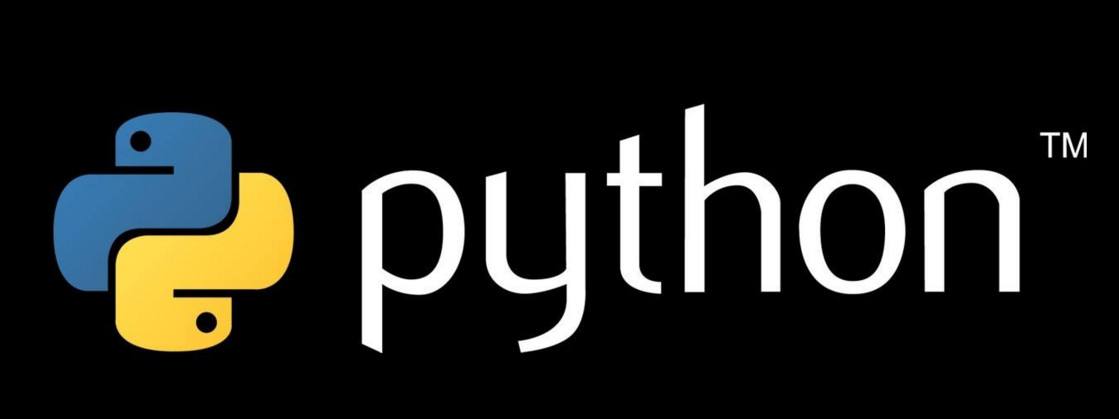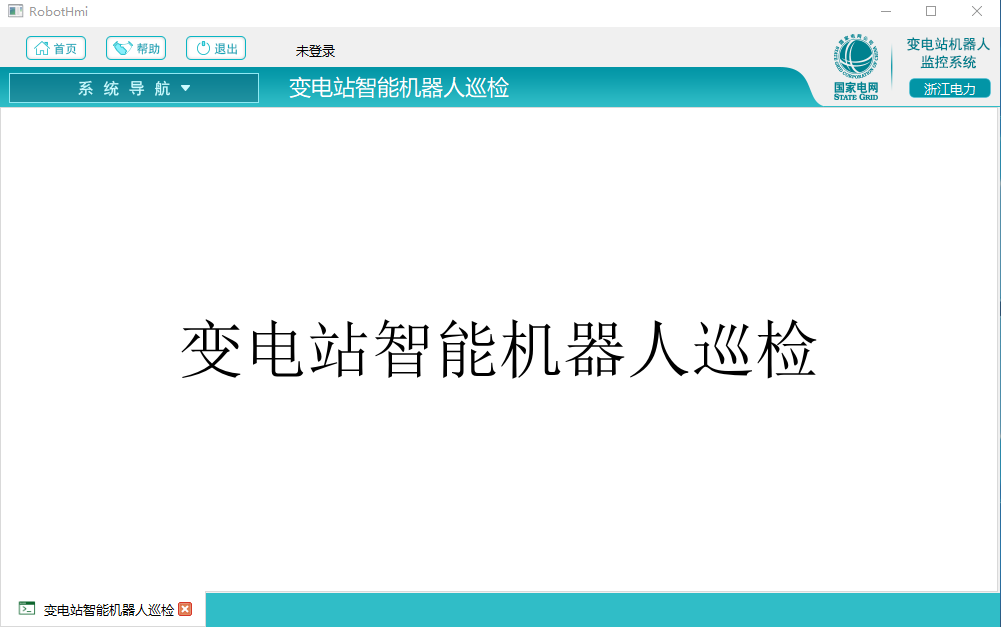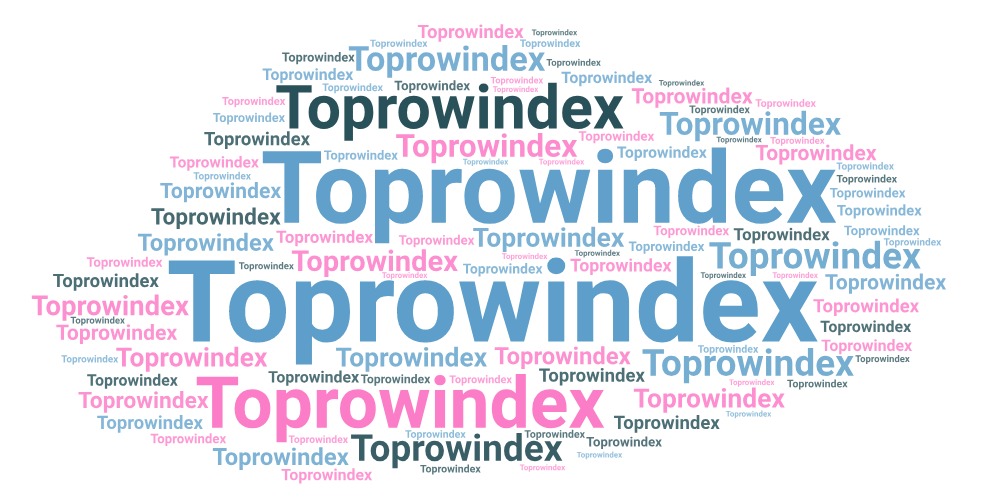【2019年2月26日】SpringBoot | 第四篇:整合Thymeleaf模板
- 本文作者:仓颉
SpringBoot是为了简化Spring应用的创建、运行、调试、部署等一系列问题而诞生的产物,自动装配的特性让我们可以更好的关注业务本身而不是外部的XML配置,我们只需遵循规范,引入相关的依赖就可以轻易的搭建出一个 WEB 工程
在前面几章中已经介绍了如何创建一个SpringBoot项目,同时简单的描述了SpringBoot REST Web服务。除此之外它也是支持如JSP、Thymeleaf、FreeMarker、Mustache、Velocity等各种模板引擎,同时还为开发者提供了自定义模板扩展的支持。
使用嵌入式Servlet容器时,请避免使用JSP,因为使用JSP打包后会存在一些限制。
在SpringBoot使用上述模板,默认从src/main/resources/templates下加载。
thymeleaf介绍
Thymeleaf是现代化服务器端的Java模板引擎,不同与其它几种模板的是Thymeleaf的语法更加接近HTML,并且具有很高的扩展性。详细资料可以浏览官网。
特点
- 支持无网络环境下运行,由于它支持 html 原型,然后在 html 标签里增加额外的属性来达到模板+数据的展示方式。浏览器解释 html 时会忽略未定义的标签属性,所以 thymeleaf 的模板可以静态地运行;当有数据返回到页面时,Thymeleaf 标签会动态地替换掉静态内容,使页面动态显示。所以它可以让前端小姐姐在浏览器中查看页面的静态效果,又可以让程序员小哥哥在服务端查看带数据的动态页面效果。
- 开箱即用,为
Spring提供方言,可直接套用模板实现JSTL、 OGNL表达式效果,避免每天因套用模板而修改JSTL、 OGNL标签的困扰。同时开发人员可以扩展自定义的方言。 SpringBoot官方推荐模板,提供了可选集成模块(spring-boot-starter-thymeleaf),可以快速的实现表单绑定、属性编辑器、国际化等功能。
使用
首先要在pom.xml中添加对thymeleaf模板依赖
<dependency>
<groupId>org.springframework.boot</groupId>
<artifactId>spring-boot-starter-thymeleaf</artifactId>
</dependency>
<dependency>
<groupId>org.springframework.boot</groupId>
<artifactId>spring-boot-starter-web</artifactId>
</dependency>然后创建一个ThymeleafController用来映射HTTP请求与页面的跳转,下面写了两种方式,第一种比较直观和优雅,第二种相对普遍且代码较少,且迎合从struts2跳坑的朋友们…
- Spring4.3以后为简化@RequestMapping(method = RequestMethod.XXX)的写法,故而将其做了一层包装,也就是现在的
GetMapping、PostMapping、PutMapping、DeleteMapping、PatchMapping
package com.battcn.controller;
import org.springframework.stereotype.Controller;
import org.springframework.web.bind.annotation.GetMapping;
import org.springframework.web.bind.annotation.RequestMapping;
import org.springframework.web.servlet.ModelAndView;
import javax.servlet.http.HttpServletRequest;
/** * @author Levin * @since 2018/4/23 0023 */
@Controller
@RequestMapping
public class ThymeleafController {
@GetMapping("/index")
public ModelAndView index() {
ModelAndView view = new ModelAndView();
// 设置跳转的视图 默认映射到 src/main/resources/templates/{viewName}.html
view.setViewName("index");
// 设置属性
view.addObject("title", "我的第一个WEB页面");
view.addObject("desc", "欢迎进入Luis-web 系统");
Author author = new Author();
author.setAge(24);
author.setEmail("1085143002@qq.com");
author.setName("Luis");
view.addObject("author", author);
return view;
}
@GetMapping("/index1")
public String index1(HttpServletRequest request) {
// TODO 与上面的写法不同,但是结果一致。
// 设置属性
request.setAttribute("title", "我的第一个WEB页面");
request.setAttribute("desc", "欢迎进入Luis-web 系统");
Author author = new Author();
author.setAge(24);
author.setEmail("1085143002@qq.com");
author.setName("Luis");
request.setAttribute("author", author);
// 返回的 index 默认映射到 src/main/resources/templates/xxxx.html
return "index";
}
class Author {
private int age;
private String name;
private String email;
// 省略 get set
}
}最后在src/main/resources/templates目录下创建一个名index.html的模板文件,可以看到thymeleaf是通过在标签中添加额外属性动态绑定数据的
<!DOCTYPE html>
<html xmlns="http://www.w3.org/1999/xhtml" xmlns:th="http://www.thymeleaf.org">
<head>
<meta charset="UTF-8">
<!-- 可以看到 thymeleaf 是通过在标签里添加额外属性来绑定动态数据的 -->
<title th:text="${title}">Title</title>
<!-- 在/resources/static/js目录下创建一个hello.js 用如下语法依赖即可-->
<script type="text/javascript" th:src="@{/js/hello.js}"></script>
</head>
<body>
<h1 th:text="${desc}">Hello World</h1>
<h2>=====作者信息=====</h2>
<p th:text="${author?.name}"></p>
<p th:text="${author?.age}"></p>
<p th:text="${author?.email}"></p>
</body>
</html>静态效果
双击打开index.html既可以看到如下的静态效果,并未和其它模板一样显示一堆标签的内容,而是正常渲染静态页面

动态效果
在浏览器输入:http://localhost:8080/index可以看到渲染后的效果,真正意义上的动静分离了
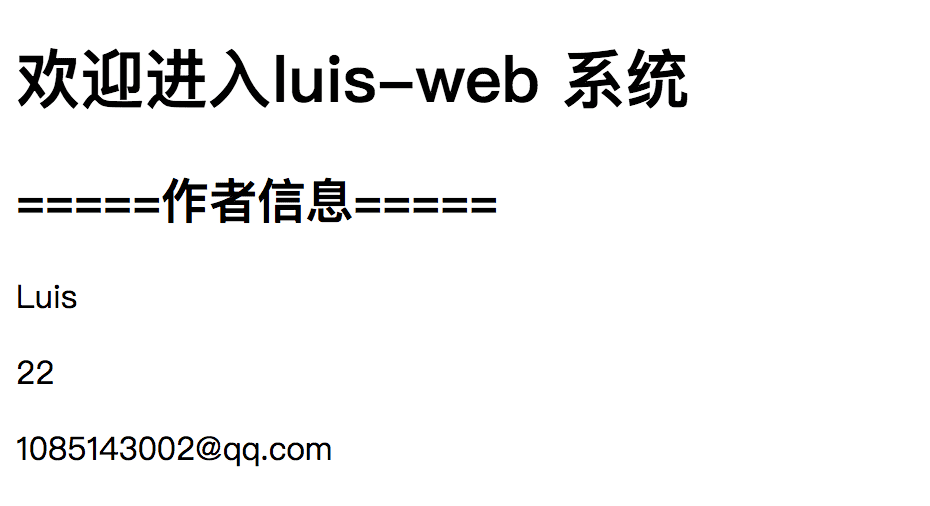
模板热部署
在IntelliJ IDEA中使用thymeleaf模板的时候,发现每次修改静态页面都需要重启才生效,这点是很不友好的,百度了下发现原来是默认配置搞的鬼,为了提高响应速度,默认情况下会缓存模板。如果是在开发中请将spring.thymeleaf.cache 属性设置成 false。在每次修改静态内容时按Ctrl+Shift+F9即可重新加载了…
修改默认
favicon.ico图标
默认情况下使用springboot总能看到一片叶子,这是因为我们没配置自己的ico导致的,解决方法也很简单,只需要在src/main/static/目录下放置一张名为favicon.ico就可以了
默认配置
SpringBoot默认情况下为我们做了如下的默认配置工作,熟悉默认配置在开发过程中可以更好的解决问题
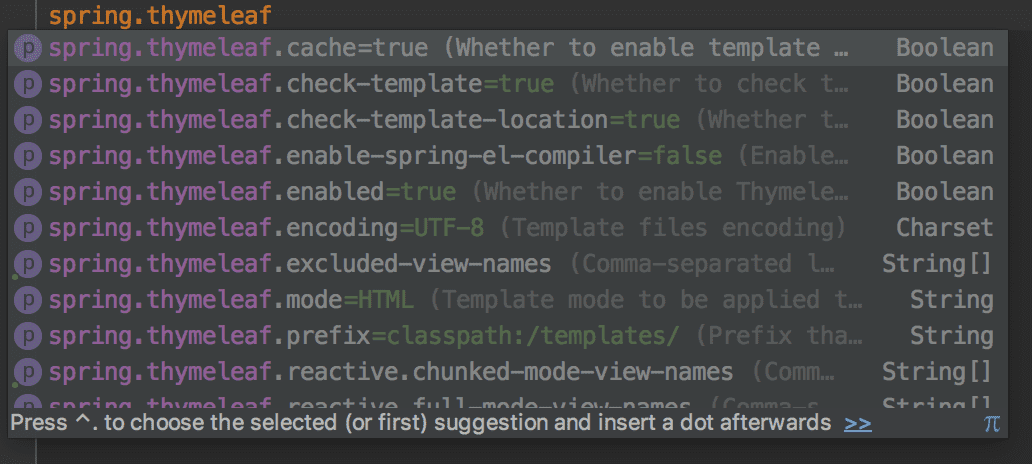
总结
Thymeleaf参考手册:https://blog.csdn.net/zrk1000/article/details/72667478
WEB MVC详细的内容请参考官方文档:https://docs.spring.io/spring/docs/5.0.5.RELEASE/spring-framework-reference/web.html#mvc
目前很多大佬都写过关于SpringBoot的教程了,如有雷同,请多多包涵,本教程基于最新的spring-boot-starter-parent:2.0.1.RELEASE编写,包括新版本的特性都会一起介绍…
上一篇:SpringBoot日志配置 下一篇:
- 本文标签: Spring Boot Spring
- 本文链接: http://www.unknowtime.top/article/85
- 版权声明: 本文为互联网转载文章,出处已在文章中说明(部分除外)。如果侵权,请联系本站长删除,谢谢。
